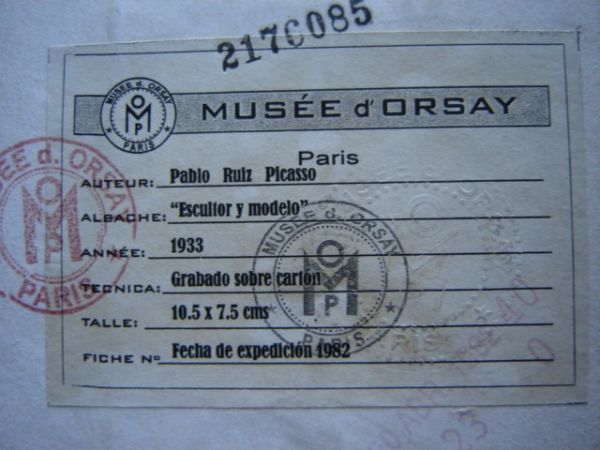FORENSIC DOCUMENT EXAMINATION
Paintings and drawings often have labels and stickers glued to the back. When they are genuine, they can help authenticate a painting.
Forgers have become aware of this, and they often produce and add their own forged labels.
The example below shows a label found on the back of a work signed Picasso. At first sight it seems to be from the famous Musée d’Orsay in Paris:
Musée d'Orsay
Fake label on the back of a fake Picasso
It comprises no less than five, very official looking stamps. The problem with this label, however, is that the entire text describing the artwork is in Spanish. Naturally, at the very French Musée d’Orsay, they write their labels in French.
Another issue is the date,1982, being on the label twice, in black and in red, in the lower right stamp. But, the Musée d’Orsay only opened its doors in 1986; it was inaugurated by President François Mitterrand on 1 December 1986.
The next example is of a stamp by the prestigious auctioneer, Christie’s. It actually consists of three stamps: a black one, a blind one, and a blue one. There is a number and a signature. It is very official looking. There is also a date of 02 Mar 1972 and the full address and phone number of Christie’s in New York.
There is only one small problem with this impressive stamp; Christie’s did not open an office in New York until 1977.

Fake Christie
We examine all documents for authenticity, not just labels but certificates, appraisals, letters, wills, bills of sale, and any document at all related to the painting we are researching for authentication or appraisal.
If you have a painting, a drawing, or some other work of art that needs to be authenticated, please contact us at:


